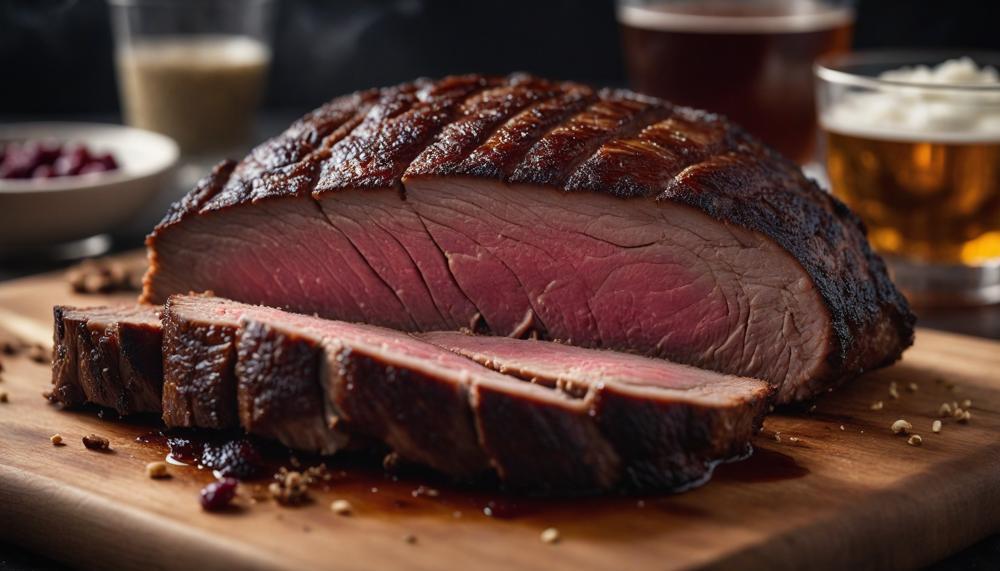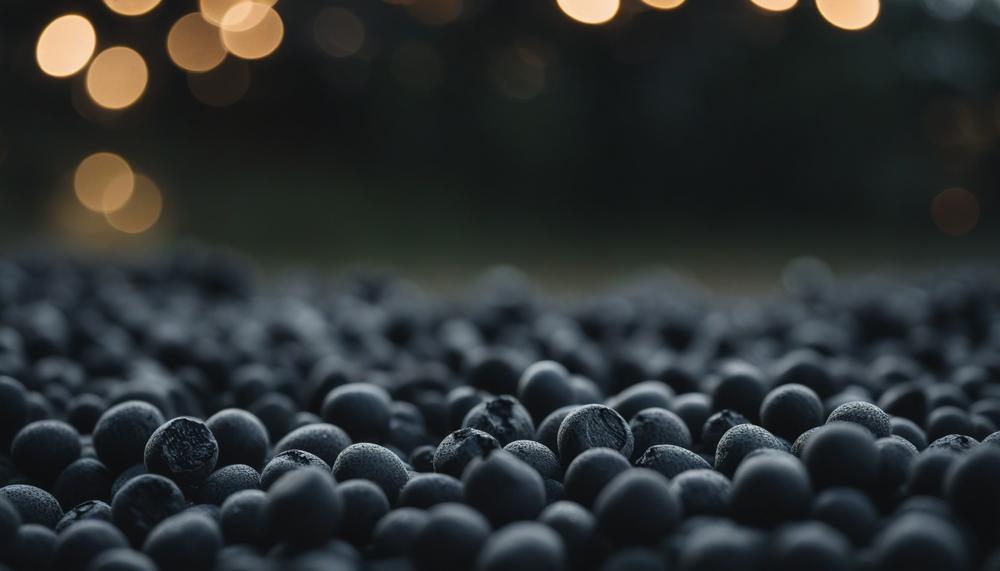You’ve just spent the better part of a day coaxing that brisket into barbecue perfection, and now comes a critical step: letting it rest. This often-overlooked phase is where the magic happens, transforming a good brisket into an exceptional one.
So, how do you let brisket rest for 12 hours? Let’s dive into why this time-honored tradition is crucial and how to do it right.
Why Resting Matters:
- Moisture Redistribution: All those flavorful juices that have been driven to the center during cooking need time to redistribute throughout the meat. This ensures each bite is as juicy as the last.
- Enhanced Flavor and Texture: Resting allows the brisket to finish cooking gently, resulting in a more tender and flavorful end product.
- Prevents Moisture Loss: Slicing too soon can cause precious moisture to escape, leaving you with a drier brisket.
Key Methods for Resting:
- Insulated Cooler (Faux Cambro Method): Ideal for longer rests, this method keeps your brisket warm and ready without overcooking.
- Cambro or Steam Cabinet: Professional-grade options that maintain consistent temperatures for extended periods.
- Room Temperature (for shorter periods): If time is tight, let it rest on the counter for up to an hour, but longer periods demand insulated solutions to keep it safe and delicious.
By giving your brisket the time it needs to settle, you’re ensuring a mouthwatering experience that’s well worth the wait. So, grab a drink, savor the anticipation, and let’s delve into the art of letting your brisket rest for the next 12 hours.
Contents
What Does it Mean to Rest Brisket, and How Do You Rest It?
To rest a brisket means to let the cooked meat sit for a period before slicing into it. This process is crucial for allowing the juices that have been mobilized by the heat of cooking to redistribute and reabsorb into the muscle fibers.
This not only makes the brisket more tender and juicy but also enhances its flavor by allowing the proteins in the juices to thicken slightly, which prevents them from running out when the meat is cut.
Here’s how to effectively rest a brisket:
Keep It Wrapped
If your brisket was wrapped in butcher paper or foil during smoking, keep it wrapped during the resting phase. This helps to retain heat and moisture.
Choose a Resting Method
Depending on the time available and the equipment at hand, select a suitable resting method:

- Cooler (Faux Cambro): Wrap the brisket in a towel and place it in an insulated cooler for several hours.
- Cambro: Utilize a professional-grade insulated container to maintain temperature for prolonged periods.
- Room Temperature: Let the brisket rest on a counter for a shorter period, up to one hour.
Resting Duration
Aim for a resting period of at least one to two hours. However, for optimal results, especially for larger briskets or when cooking in bulk, resting for up to four hours can be beneficial.
Here is a table illustrating the resting methods and their respective durations for clarity:
| Method | Duration | Suitable For |
| Cooler (Faux Cambro) | 2-4 hours | Extended resting, large gatherings |
| Cambro | Up to 8 hours | Professional settings, extended periods |
| Room Temperature | Up to 1 hour | Quick rest, smaller briskets |
What Does Resting Do?
Resting does wonders for both the body and mind. Here’s a breakdown of its significant benefits:
- Facilitates Recovery and Integration: Resting helps the body recover from physical exertion and allows the mind to process and integrate new information. Whether you’ve had an intense workout or a mentally taxing day, rest is vital.
- Essential for Health: Sleep, a crucial form of rest, is indispensable for maintaining overall well-being. It ensures physical, psychological, and emotional balance.
- Completes Stress Response Cycle: Resting completes the stress response cycle, calming the heightened alertness associated with fight, flight, fawn, or freeze responses.
- Regulates Hormones: Rest influences hormones that control mental energy, appetite, and stress, playing a vital role in weight management and mood regulation.
- Supports Physical Recovery: Rest allows the body to repair and restore itself after exercise, reducing muscle fatigue and improving performance.
- Prevents Injuries: Adequate rest reduces the risk of injuries by giving the body time to recover and strengthen.
- Enhances Cognitive Function: Rest improves brain functions such as memory consolidation, decision-making, and overall cognitive abilities.
- Strengthens Immune System: Rest supports a healthy immune system, helping the body fend off illnesses and infections.
- Balances Appetite: Through hormonal regulation, rest helps manage cravings and supports healthy eating habits.
- Improves Mood: Regular rest decreases irritability, stabilizes mood, and alleviates anxiety, contributing to better emotional health.
Resting is thus a multifaceted process integral to our overall health, encompassing physical recovery, emotional stability, and cognitive enhancement.
Why Should You Let Brisket Rest?
You should let brisket rest because it transforms a good barbecue into a great one. Resting allows the meat’s juices to redistribute, resulting in a juicier, more flavorful brisket. Without rest, the juices would run out, leaving the meat dry and less tasty.
Resting also tenderizes the meat. As the brisket cools slightly, the muscle fibres relax, making it easier to slice and eat. This process is crucial for achieving that melt-in-your-mouth texture that barbecue enthusiasts crave.
Furthermore, letting the brisket rest gives the flavours of your rub and barbecue sauce time to meld and develop. This results in a richer, more complex flavour profile, enhancing the overall taste experience.
| Reason | Explanation | Benefit |
| Redistributes Juices | Juices are reabsorbed into the meat | Juicier and more flavorful brisket |
| Tenderizes Meat | Muscle fibres relax as the meat cools | Easy to slice and eat |
| Enhances Flavour | Rub and sauce flavours meld and develop | Richer, more complex taste |
What About Carry-Over Cooking?
Carry-over cooking, often just referred to as resting, plays a crucial role when grilling meats. This process involves the meat continuing to cook for a period after being removed from the heat source. Due to residual heat, the interior temperature of the meat can increase by several degrees, ensuring it reaches a uniform doneness without additional external heat.
This phenomenon is particularly significant with larger, denser meats like brisket, as detailed in the previous section. The process not only affects temperature but also impacts texture and flavor. Allowing the meat to rest lets the heat distribute more evenly, which helps the muscle fibers relax and reabsorb the juices that make your meat succulent and flavorsome.
Here’s a practical guide to understanding how carry-over cooking affects different meats, based on their size and cooking time:
| Meat Type | Initial Resting Temp (°C) | Expected Rise During Resting (°C) |
| Steak (1 inch thick) | 57 | 3 to 4 |
| Pork Roast (2 lbs) | 63 | 5 to 6 |
| Whole Chicken | 74 | 3 to 8 |
For optimal results, consider removing your meat from the heat a few degrees before it reaches the target temperature, and let carry-over cooking bring it to the perfect doneness.
This technique not only preserves the juices but also enhances the overall eating experience, marrying the flavours more intimately with every bite.
Conclusion
Congratulations on reaching the pinnacle of barbecue mastery: the completion of your brisket cook. Now, the crucial final act awaits—letting your brisket rest for 12 hours. This often underestimated step is where the alchemy of barbecue excellence truly unfolds.
The Importance of Resting
Allowing your brisket to rest isn’t just about patience; it’s about enhancing its flavor, texture, and overall dining experience. During the rest period, the meat undergoes essential processes:
- Juice Redistribution: After hours of cooking, the juices in the brisket concentrate at the center. Resting allows these flavorful liquids to evenly disperse throughout the meat, ensuring every slice is moist and succulent.
- Tenderization: As the brisket cools slightly, the muscle fibers relax, making it easier to carve and resulting in a melt-in-your-mouth texture.
- Flavor Enhancement: Resting allows the flavors to meld and deepen, providing a richer taste experience than immediate slicing would achieve.
Methods for Effective Resting
To preserve these hard-earned qualities, choose a suitable resting method:
- Insulated Cooler (Faux Cambro Method): Ideal for extended resting periods, wrap your brisket in towels and place it in a cooler to maintain temperature and moisture for up to 12 hours.
- Cambro or Steam Cabinet: Professional-grade equipment that ensures consistent temperature control, perfect for longer rests in professional settings.
- Room Temperature (Short Rest): For quicker turnarounds, let the brisket sit on a counter for up to an hour, though this is best for smaller cuts.






